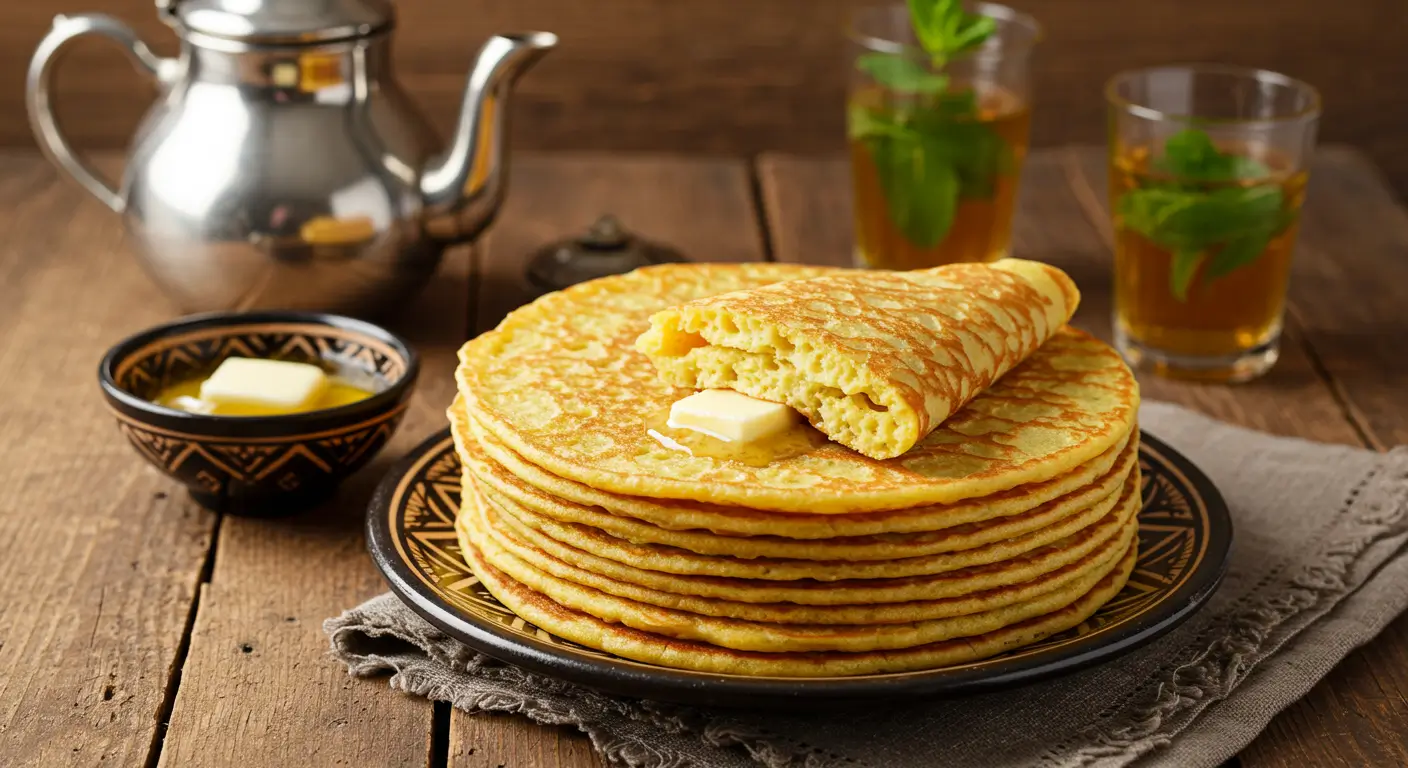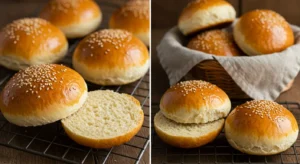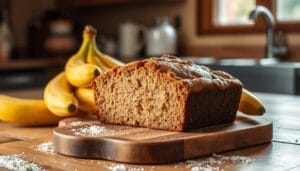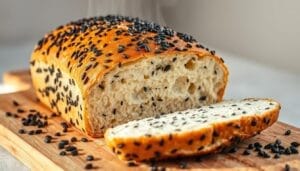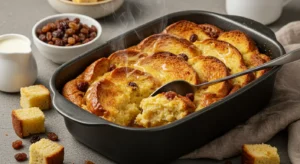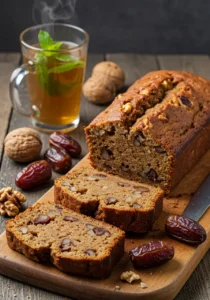Table of Contents
Have you ever wondered what happens when you combine the fluffiness of pancakes with the magic of a thousand tiny holes that soak up sweet, golden honey like edible sponges? These incredible Baghrir Moroccan Pancakes are unlike any breakfast treat you’ve ever experienced, featuring a unique spongy texture covered in beautiful little pockets that create the perfect vehicle for melted honey butter. Get ready to discover why these ancient North African treasures have been captivating taste buds for centuries!
What Makes These Baghrir Moroccan Pancakes So Special?
Baghrir Moroccan Pancakes are often called “thousand-hole pancakes” because of their distinctive appearance – one side is completely smooth while the other is covered in hundreds of tiny holes that form naturally during cooking. This unique texture isn’t just beautiful to look at; it serves a delicious purpose by creating perfect little pockets to hold honey, butter, and syrup.
Time Requirement: About 45 minutes total (15 minutes prep, 30 minutes cooking)
Difficulty Level: Beginner-friendly! The technique is simple, but getting the perfect holes takes a little practice. Don’t worry if your first few aren’t perfect – they’ll still taste amazing!
What makes this recipe truly special is its ancient heritage and incredibly simple ingredient list. These pancakes have been a beloved breakfast staple in Morocco and across North Africa for generations. They’re naturally dairy-free and can easily be made vegan, yet they’re incredibly satisfying and flavorful.
The magic happens during cooking when the yeast and semolina create steam bubbles that form those signature holes. Unlike regular pancakes, you only cook them on one side, which keeps the bottom smooth and the top perfectly holey for maximum honey absorption.
Essential Ingredients for Perfect Baghrir Moroccan Pancakes
Let’s explore what makes these Baghrir Moroccan Pancakes so wonderfully unique:
Fine Semolina (1 cup): This is the star ingredient that creates the signature texture. Semolina is made from durum wheat and gives the pancakes their slightly chewy, satisfying bite. Don’t substitute with regular flour – semolina is essential for authentic results.
All-Purpose Flour (1/2 cup): Works with the semolina to create the right consistency. The combination gives you structure while keeping the pancakes tender.
Active Dry Yeast (1 teaspoon): This creates the magic holes! The yeast ferments and creates bubbles that form those beautiful pockets. Make sure your yeast is fresh for the best results.
Warm Water (2 cups): Activates the yeast and creates the batter. The water should be warm but not hot – about the temperature of a warm bath.
Sugar (1 tablespoon): Feeds the yeast and adds a touch of sweetness. You can use regular white sugar or substitute with honey.
Salt (1/2 teaspoon): Balances the flavors and helps strengthen the gluten structure.
Baking Powder (1/2 teaspoon): Gives extra lift and helps create more holes. This isn’t traditional but helps ensure success for home cooks.
For the Honey Butter:
- 1/2 cup butter, melted
- 1/4 cup honey
- Pinch of salt
Substitutions and Variations:
- No semolina? Look for it in Middle Eastern stores or order online – it’s worth the search!
- Vegan version? The pancakes are naturally dairy-free, and you can make vegan honey butter with plant-based butter and maple syrup
- Gluten-free? Try a combination of rice flour and cornmeal, though the texture will be different
- No yeast? Use 2 teaspoons of baking powder instead, but you’ll get fewer holes
Step-by-Step Instructions: Creating Pancake Perfection
Making authentic Baghrir Moroccan Pancakes is a beautiful process. Here’s how to do it right:
Step 1: Create Your Magic Batter (10 minutes)
In a large bowl, whisk together the semolina, flour, salt, sugar, and baking powder. Make sure there are no lumps – this is important for smooth pancakes.
In a separate cup, dissolve the yeast in 1/4 cup of the warm water. Let it sit for 5 minutes until it gets foamy. If it doesn’t foam, your yeast might be old – start over with fresh yeast.
Add the yeast mixture to the dry ingredients, then gradually pour in the remaining warm water while whisking constantly. You want a smooth, lump-free batter that’s about the consistency of heavy cream.
Cover the bowl with a clean kitchen towel and let the batter rest for 15-20 minutes. During this time, the yeast will work its magic, and you’ll see the batter become bubbly and slightly thicker.
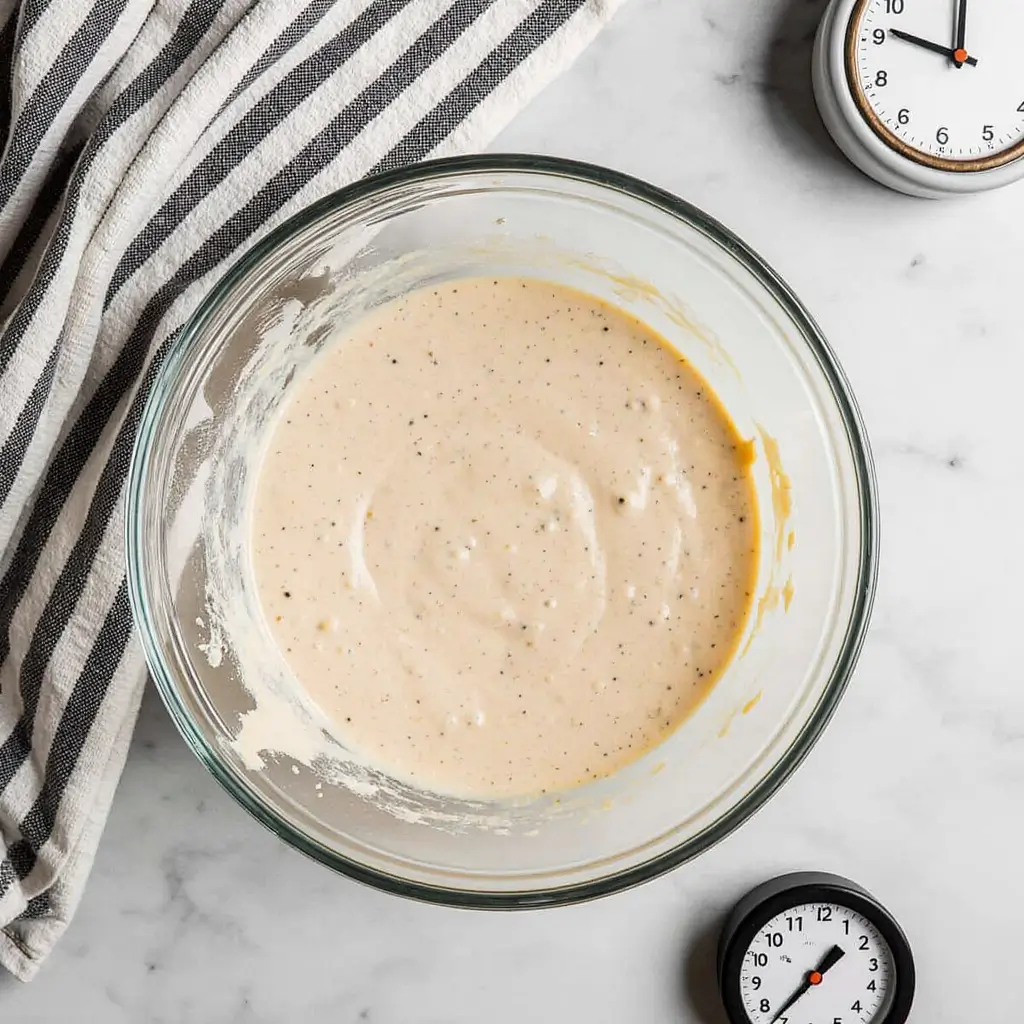
Pro tip: The batter should be pourable but not too thin. If it’s too thick, add a little more warm water. If it’s too thin, let it rest longer to thicken up.
Step 2: Perfect Your Cooking Technique (5 minutes setup)
While your batter rests, prepare your honey butter. In a small saucepan, melt the butter over low heat. Stir in the honey and a pinch of salt. Keep this warm but not hot.
Heat a non-stick pan or crepe pan over medium-low heat. You don’t need any oil or butter – the pancakes should cook in a dry pan.
Test your pan temperature by sprinkling a few drops of water on it. They should sizzle gently but not violently. Too hot, and your pancakes will cook too fast and not develop holes.
Give your batter a gentle stir – it should be bubbly and alive-looking from the yeast activity.
Temperature tip: Getting the heat right is crucial. Too high and the bottom cooks before the holes can form. Too low and they’ll be heavy and dense.
Step 3: Cook Your Holey Masterpieces (20 minutes)
Pour about 1/3 cup of batter into the center of your heated pan. Don’t spread it – let it spread naturally into a circle about 6 inches wide.
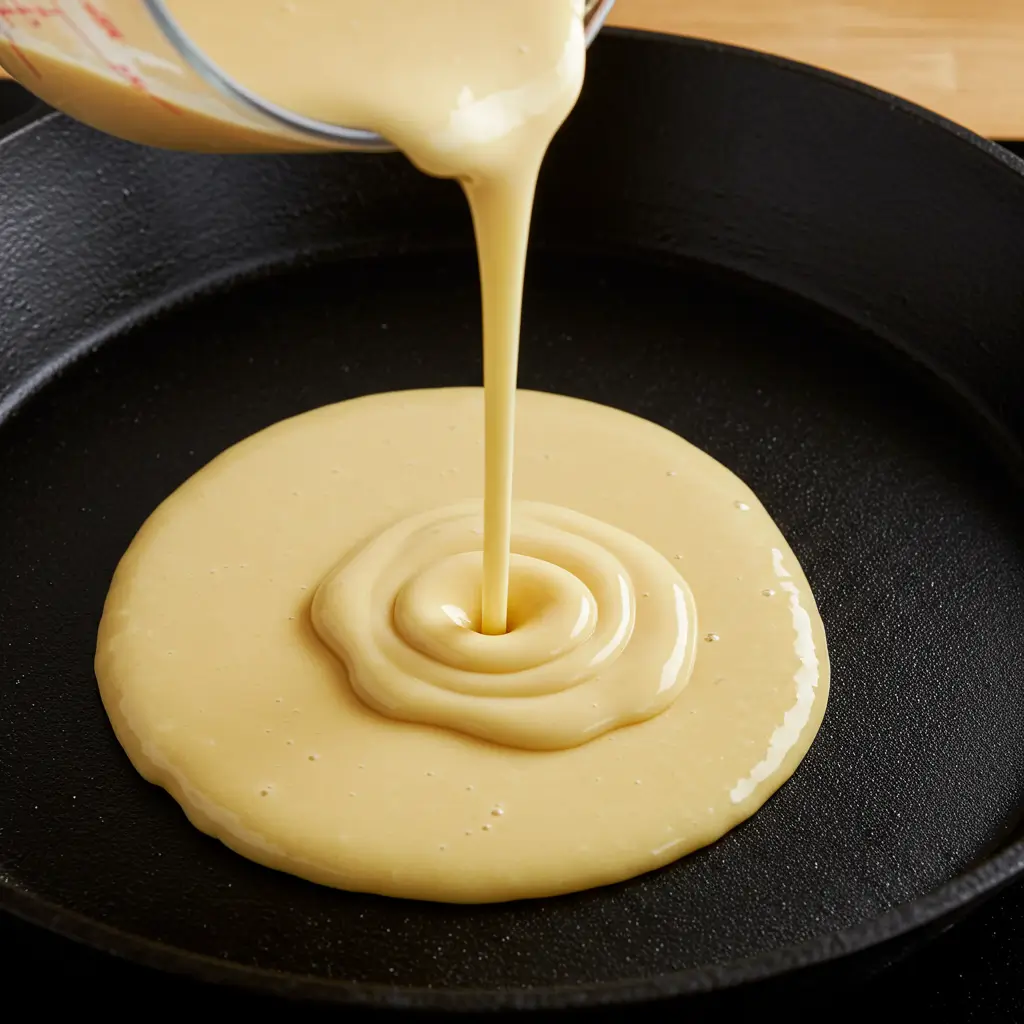
Here’s the key: only cook on one side! Watch as bubbles form all over the surface and the holes begin to appear. This takes about 2-3 minutes.
The pancake is done when the surface looks set and the holes are clearly formed. The bottom should be lightly golden but not brown.
Carefully remove the pancake with a spatula and place it hole-side up on a plate. Make sure the smooth side is at the bottom..
Repeat with the remaining batter, stacking the finished pancakes hole-side up.
Cooking tip: Don’t flip these pancakes! The magic is in cooking only one side. The holes won’t form properly if you flip them.
Building Your Baghrir Base: Expert Techniques
The secret to perfect Baghrir Moroccan Pancakes lies in understanding the science behind them:
Batter Consistency: Your batter should be smooth and pourable. Lumps will prevent proper hole formation, so whisk thoroughly and strain if needed.
Yeast Activity: You should see bubbles forming in your rested batter. If you don’t, the yeast may be inactive or the water was too hot.
Pan Management: Use a non-stick or well-seasoned pan. Clean it between batches if batter starts to stick.
Heat Control: Medium-low heat is crucial. High heat cooks the bottom too fast and prevents hole formation.
Presentation Tips:
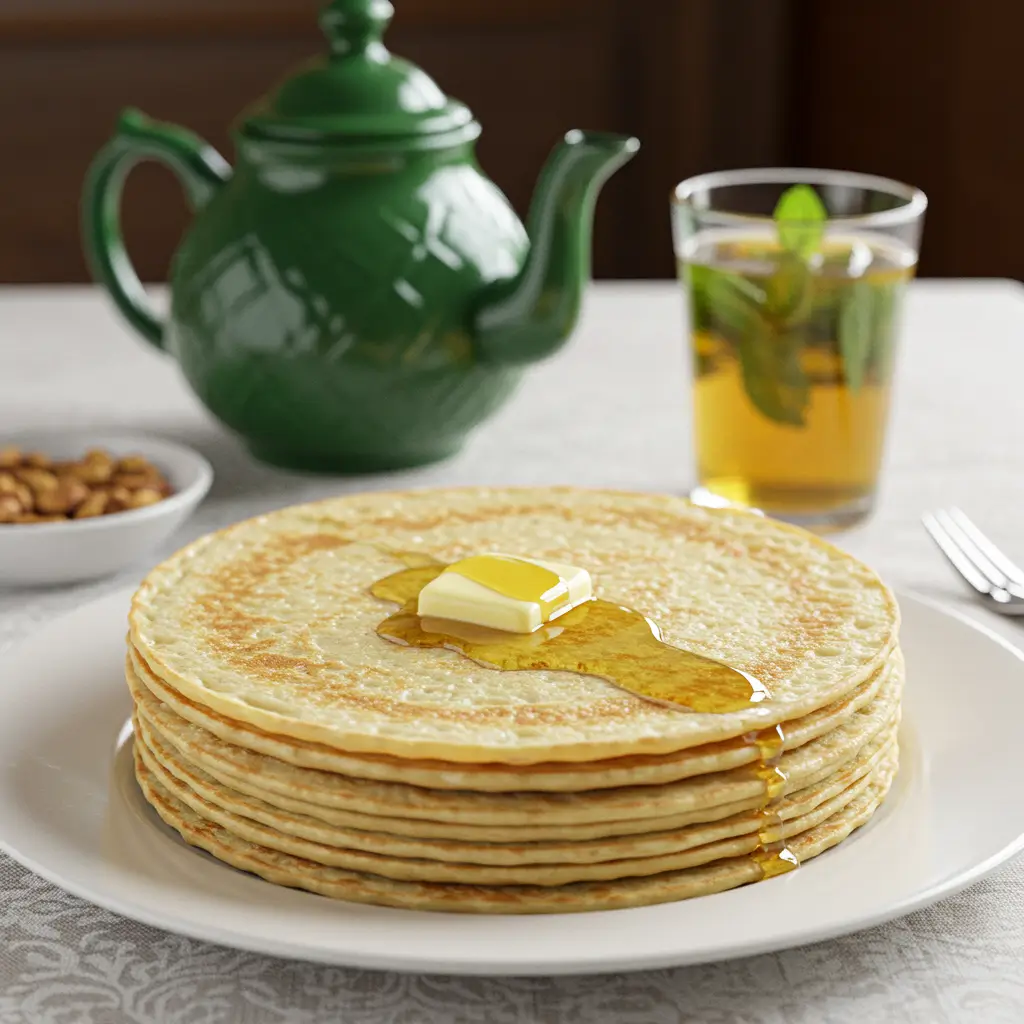
- Serve immediately while warm for the best texture
- Drizzle honey butter generously over the holey surface
- Stack them artfully on a warm plate
- Garnish with chopped almonds or pistachios
- Dust lightly with powdered sugar for special occasions
- Serve with fresh mint tea for an authentic Moroccan experience
Texture Notes: Perfect baghrir should be tender and spongy, not chewy or dense. The holes should go almost all the way through the pancake.
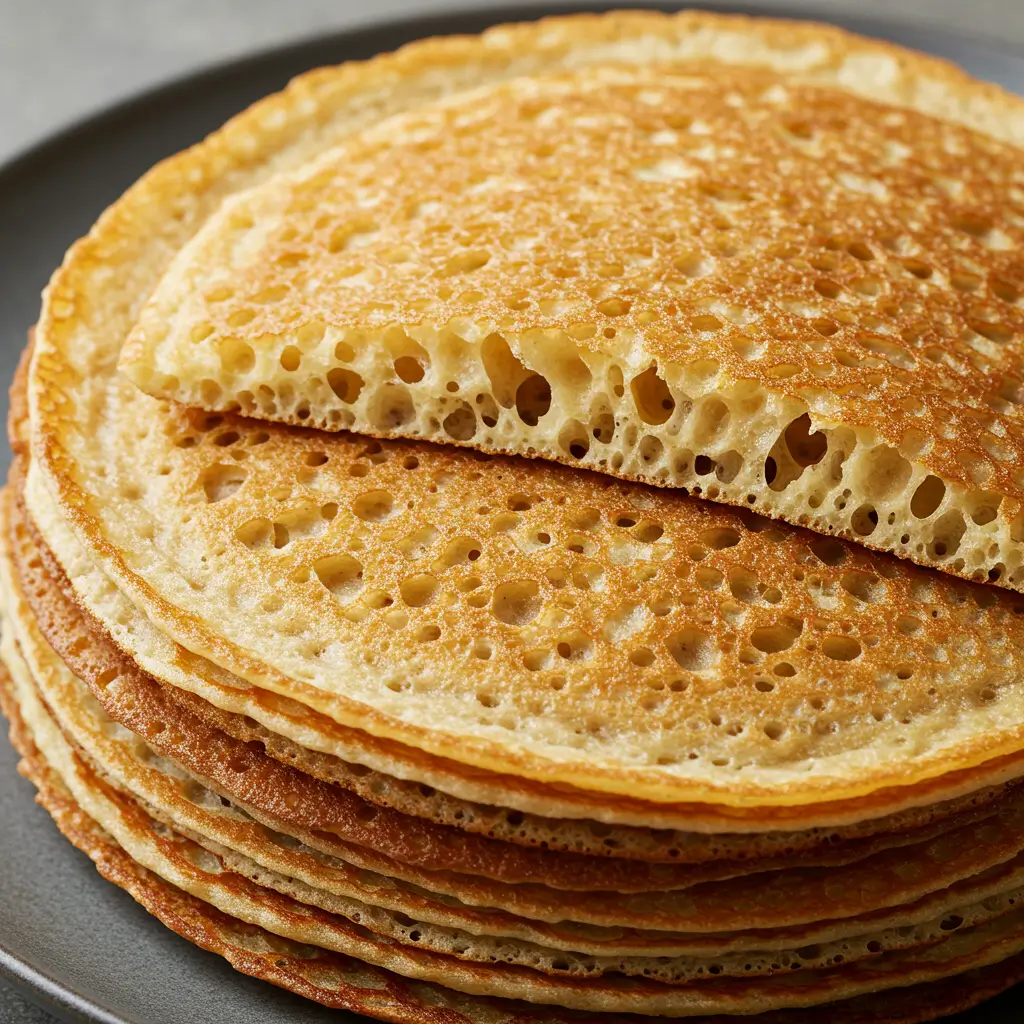
Storage and Make-Ahead Tips
These Baghrir Moroccan Pancakes are best enjoyed fresh, but here’s how to handle leftovers:
Room Temperature: Fresh pancakes can sit covered for up to 2 hours. They’re best served warm.
Refrigerator: Store leftover pancakes wrapped in plastic wrap for up to 3 days. The texture will change slightly but they’re still delicious.
Freezer Storage: Freeze pancakes in single layers separated by parchment paper for up to 2 months.
Reheating: Warm pancakes in a low oven (200°F) for 5 minutes, or microwave for 20-30 seconds. Don’t overheat or they’ll become tough.
Make-Ahead Tips:
- You can make the batter up to 2 hours ahead – just give it a gentle stir before cooking
- Pre-measure dry ingredients and store in an airtight container
- Make honey butter ahead and reheat gently when needed
- Cook pancakes and freeze them for quick breakfasts later
Serving Temperature: These are best served warm. The honey butter should be liquid enough to soak into all those beautiful holes.
Creative Recipe Variations
Once you master traditional Baghrir Moroccan Pancakes, try these delicious twists:
Orange Blossom Baghrir: Add 1 teaspoon orange blossom water to the batter for a floral, Middle Eastern flavor.
Coconut Baghrir: Replace 1/2 cup of water with coconut milk and add shredded coconut to the honey butter.
Spiced Version: Add 1/2 teaspoon cinnamon and a pinch of cardamom to the batter for warm, aromatic pancakes.
Chocolate Drizzle: Serve with melted dark chocolate drizzled over the honey butter for a decadent treat.
Almond Honey Butter: Add almond extract and chopped almonds to your honey butter mixture.
Savory Style: Omit the sugar and serve with cheese, olives, and fresh herbs for a Mediterranean breakfast.
Rose Water Delight: Add rose water to both the batter and honey butter for an exotic, perfumed flavor.
Fruit Topped: Serve with fresh berries, sliced bananas, or chopped dates on top of the honey butter.
Mini Baghrir: Make smaller pancakes using 2 tablespoons of batter for cute, bite-sized versions perfect for parties.
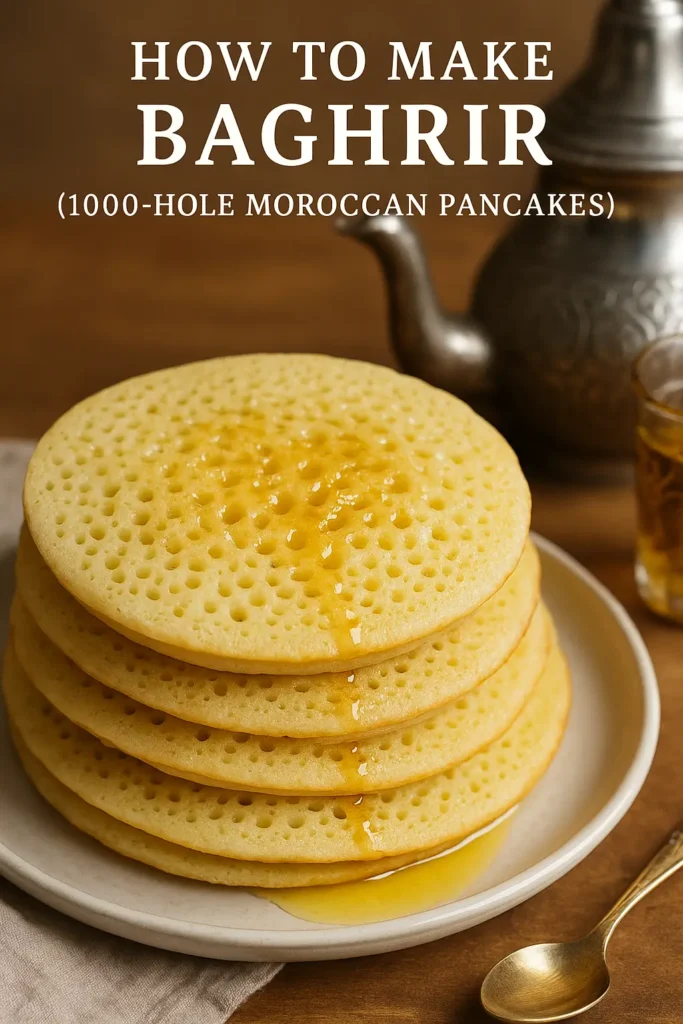
Conclusion: Your Gateway to Moroccan Cuisine
These authentic Baghrir Moroccan Pancakes are more than just a breakfast recipe – they’re a delicious journey into North African cuisine and culture. With their unique texture and incredible ability to soak up sweet honey butter, these pancakes offer a completely different experience from regular breakfast fare.
The beauty of baghrir lies in their simplicity. With just a few basic ingredients and one special technique, you can create something truly extraordinary in your own kitchen. The sight of those perfect little holes forming as they cook is almost magical, and the taste is even better.
Don’t be discouraged if your first batch isn’t perfect. Like many traditional recipes, baghrir takes a little practice to master. Each attempt will teach you something new about batter consistency, temperature control, and timing. Even imperfect baghrir taste amazing!
These pancakes also offer a wonderful way to explore Moroccan flavors and cooking techniques. They pair beautifully with mint tea and can be part of a larger North African-inspired breakfast or brunch spread.
Feel free to experiment with the variations we’ve shared, or create your own unique twists. The traditional recipe is your foundation, but there’s plenty of room for creativity once you understand the basics.
So gather your semolina, activate that yeast, and get ready to create some Baghrir Moroccan Pancakes magic in your kitchen. Your taste buds are in for a treat, and you’ll have a new impressive recipe to share with friends and family. Happy cooking, and enjoy every holey, honey-soaked bite!
Did you love it ? Let us know!
There are no reviews yet. Be the first one to write one.

